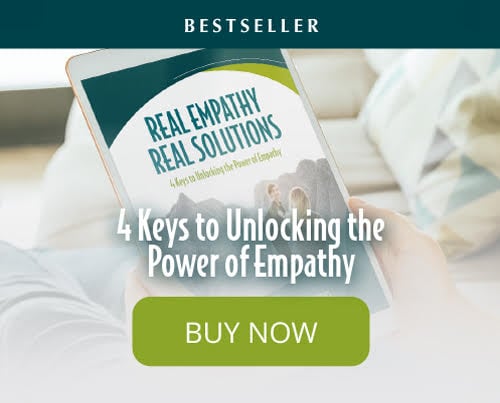Conflict within ourselves and in relationships is one of the biggest challenges for most people. Learning to appreciate another person's perspective and their differences contributes to better communication and greater understanding, but first, we must quiet the mixed feelings within ourselves! Self-awareness is an essential aspect of resolving conflicted feelings.
Estimated reading time: 4 minutes
 Conflicting Feelings Can Cause Misunderstanding
Conflicting Feelings Can Cause Misunderstanding
Recently I was coaching a married couple who were having difficulty working things out. They brought up one particularly upsetting event that was very uncomfortable for them both.
The wife was being honored at an awards ceremony for her achievements at work. Several weeks before the ceremony, the husband agreed to go and even told his wife how proud he would be to stand by her side. She was very pleased with his expression of pride and thrilled that he would accompany her. She assumed her husband was also looking forward to the event.
Fast forward to the night of the event.
As they were getting dressed for the awards ceremony, the husband started lamenting that they had to go and grumbled about how much he despised social events. The wife took his complaints as evidence that he didn’t mean what he had said previously. She was hurt and angry with him, and the entire evening was affected. Each thought the other was “too emotional.”
The couple told me this story as an example of a conflict between them.
But was it?
Or was it an example of an inner conflict, particularly in the husband?
Inner conflict is nothing new. Somebody once said,
“There is as much difference between us and ourselves
as there is between us and others.”
That was Michel de Montaigne, a French essayist who lived five centuries ago!
In the case of my clients, the husband truly did mean that he would be proud to stand beside his wife at the awards ceremony. He also meant what he said when they were getting dressed for the event.
As an introvert, he disliked socializing in large groups and didn’t relish attending. One feeling did NOT invalidate the other; they were both true for him at the moment he said them—and perhaps even simultaneously.
So, how do we increase self-awareness while also creating the close and loving relationships we want?
We keep searching for inner peace, and at the same time, we keep tripping over conflicts, both external and internal. Our brains are wired for relationships.
But have you ever wondered if the relationship with yourself is connected to the quality of the relationships in your life?

How to Resolve Inner Conflict
One of the more difficult challenges of being human is the difference between us and ourselves. So many conflicting feelings and thoughts can be churning within us at any given time.
For instance, you can be truly happy for a friend who just found the love of her life, and also be a little miffed that she no longer has time for you—and that you still haven’t found your perfect relationship.
Or you can be thrilled about the great job promotion that you've worked hard to achieve, yet also feel guilty that you've been working too many hours and missing your kids. One client I worked with had a hard time enjoying his major promotion because of the hurt feelings of the employee who didn't get the position.
Walt Whitman (ha—only two centuries ago!) had something to say about conundrums like this! “Do I contradict myself? Very well then I contradict myself. I am large, I contain multitudes.”

It can be very liberating to accept the entire stew of contradictions inside ourselves. If we listen and get curious without judgment, something magical happens. We begin to see that we "contain multitudes."
Self-awareness leads us step by step to what is important to us at any given moment.
Self-Acceptance Is the Path to Inner Peace
A lack of self-awareness is one of the core problems in most struggling relationships. We must first accept ourselves as imperfect before we can accept the flaws of others.
When we accept all parts within us, we can do a better job of showing up for ourselves. We begin to participate in life with greater self-acceptance, and the side effect is self-love and emotional well-being.
When we gently observe the “difference between us and ourselves,” we can learn to close the gap.
When we feel split by conflicting emotions, we can explore what's most important to us, calm upsetting feelings, and take action as our own advocates.

Loving ourselves more compassionately wherever we are right now gives us the freedom to open up to a peacefulness inside us.
By giving ourselves permission to feel whatever we feel without making ourselves wrong or bad or too much or too emotional or whatever label comes to mind, then we can also hold the vision more resolutely of the person we want to become (and already are). Resolving conflict and finding inner peace means we accept all parts of ourselves. This acceptance allows us to claim the truth within us.
Andrea Mathews says in her book Letting Go of Good:
"The self-actualized person is alive to the marrow of his bones. He believes life was meant to be fully lived in harmony with all of the various components of Self.
The self-actualized person obtains life's necessities and his own desires by following this inner lead to find his own path of joy. Therefore, the self-actualized person understands what it means to love the Self."
Learn to honor all of yourself! Self-awareness empowers us to understand and transform conflicting emotions and quell that inner critic. Your strengths step forward as allies on your path of self-development and the payoff is greater emotional fitness.
If you'd like to dive deep into greater skills in emotional intelligence, check out our online products.

Inner peace is not an arrival point.
Peace and happiness are states of being you carry with you everywhere you go when you practice mindfulness and align with your greater Self, not your personality.
Internal conflict is only a tuning fork in the process of becoming fully human and fully alive.
So next time you have an inner conflict, follow the steps below:
Steps for Exploring Your Emotions
STEP 1 - Stop fighting with yourself and breathe.
The first step is just acknowledgment. Accept ALL of your emotions and understand they will sometimes conflict. Each emotion holds valuable information about what is important to you.
Breathe in peace and breathe out judgment and shame. It may sound too simple but it's highly effective.
STEP 2 - Get curious with Self-Compassion.
Ask yourself, "If I had a really good reason for feeling what I'm feeling, what would it be?"
Assume your reasons are legitimate, even if the feelings may seem irrational. Emotions guide us to the right action if we listen. Always approach your inner world with compassion.
STEP 3 - Ask yourself, "What do I need right now to feel better?"
Sometimes, our emotions are simply pointing to what we need. It can be as simple as taking a few deep breaths. To feel more peaceful or productive or patient or kind.
You might need to talk with your friend or spouse about something hurtful. You may need exercise or perhaps, you just need a break on a stressful day.
And if you are unhappy at work, your emotions may be signaling you to make a radical change in your career.
Your answer when you get curious might be to feel what you're feeling more fully no matter how uncomfortable. Whatever your answer, it's your truth. Stop avoiding it.
STEP 4 - Act on what you hear.
Without action, we can fool ourselves that talking or thinking or meditating is enough. Whatever we tolerate will continue.
Feelings are there to guide us to our true north. Let the compass help you be true to YOU!
STEP 5 - Repeat.
The last step is to repeat until you've made this process a habit.
The more you are aware of your emotions, your self-awareness and emotional literacy will grow.
The first time you do these steps, you may need to practice one step at a time until that step feels natural. Then, add the next step. Practice the steps until you can do every step easily and the entire process is on autopilot, taking only a few minutes.
Here's to finding equanimity and inner peace with our contradictions and the swirling differences between us and ourselves.
To learn more about emotional intelligence or how to find inner peace, listen to our free webinar "How to Use Your Emotions to Make Life-Transforming Change.”









